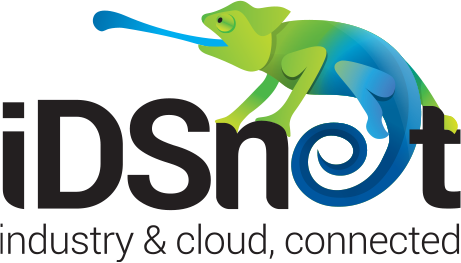Dec 22, 2022 by Mark Dingley
As 2022 draws to a rapid close, what better time to rewind and reflect on the year that's been?
Back in January, after two tumultuous years, Matthews Australasia CEO Mark Dingley told manufacturers to “expect the unexpected” in 2022. So, how did the year play out?
Let's look back on the manufacturing trends that shaped 2022 and the lessons we've learnt.
Sustainability is a matter of survival. It's a way to build customer trust and loyalty while reducing business risk. According to Mintel's 2022 Sustainability Barometer, some 46% of consumers think companies are “most responsible” for increasing the amount of packaging that can be recycled, 32% for reducing vehicle emissions, and 27% for increasing the use of renewable energy.
In 2022, we've seen a growing number of businesses across food and drink exploring innovative ways to meet sustainability challenges, whether choosing more eco-friendly packaging materials or moving to renewable energy.

For example, Australian-based Young Henry's Brewery is taking action by partnering with the University of Sydney's climate-change scientists to use micro-algae to capture the carbon dioxide emitted from fermenting beer and turn it into oxygen.
Snacks and treats manufacturer Mars Wrigley Australia has committed to transitioning all Australian-made chocolate bars to new paper-based packaging that can be recycled via traditional kerbside recycling. This is set to eliminate over 360 tonnes of plastic – enough to stretch from Melbourne to London and back.
With packaging being a number-one concern, Flinders University materials researchers and German biomaterials developer one.five are using seaweed extracts to develop next-generation biopolymer coating materials that could solve packaging waste dilemmas for the fast-food industry. The new non-pollutive biomaterials are designed to replace conventional fossil-based plastic coatings currently used in grease-resistant fast food packaging.
Takeaway: Manufacturers should look at every part of their business to make a positive difference in 2023. From packaging and transportation, and even reducing waste in coding and labelling, every process is an opportunity to be more sustainable.
Traceability took a leap forward in 2022. At the 2022 Traceability Summit, the Australian Government reported that streamlining traceability regulations unlocks potential to deliver an industry-wide economic projected benefit of between $108 million to $197m a year.
As a result, the Government is investing $68.4m into Australia's agricultural traceability systems and funding agricultural traceability grants, with $7m available for 30 successful applications.
Thanks to the grants program, from July 2023, every wool pack imported into Australia will carry eBale technology enabling traceability from farm to retailer.
Earlier in 2022, Matthews Australasia announced a new strategic partnership with FreshChain Systems to combine the strength of Matthews' best-in-class, on-demand printing and labelling solutions with FreshChain's digital end-to-end fresh food-traceability and provenance platform.
Takeaway: With traceability innovations gathering momentum, it's never been easier for manufacturers and producers to improve traceability for their products, while gaining more consumer trust.

Have you ever noticed how many private-label products are in your weekly shopping basket? In Australia, private-label dollar growth is outpacing branded products by nearly two times.
Popular own-brand offerings have become critical to supermarkets' success – they gain up to 30% higher margins on private-label goods than branded products.
With Australians starting to tighten their purse strings, we can expect a surge in private-label products, which are already popular for shoppers looking for good quality at lower prices. In fact, 61% of Australians say private-label products are a good alternative to branded products.
Takeaway: Understanding the market trends for 2023 will be the key to success. As customers deal with the challenges of higher interest rates and a higher cost of living, the growth of private labels is inevitable. For those who want to tap into the trend, check out our tips for becoming a private label supplier.
.jpg)
How do you grow production volumes to meet increased demand, without compromising on quality?
Automate.
As if that wasn't already a strong business case, the role of automation has become even more critical since the coronavirus pandemic. At FoodTech 2022, we saw countless examples of how manufacturers can automate their processes to drive growth.
Data collection and analysis are at the top of the automation wish list for manufacturers. Software such as Matthews iDSnet gives manufacturers the information they need to make faster and better business decisions, such as pinpointing stoppages and bottlenecks, reducing waste and improving Overall Equipment Effectiveness (OEE), and ultimately improving quality assurance.
Takeaway: Automation is a no-brainer. The real challenge for today's manufacturers is to pinpoint precisely where automation will add the most value to their business. For example, the automation of inspection is more effective and efficient than humans.

The Australian meat-substitute market is witnessing a boom, with sales projected to rise to $409.8m (US$304.5 million) by 2026.
We've seen some incredible inventions over the past few years, and 2022 was no different. Here are some of our favourites:
.jpg)
One of the top trends for 2022 was Precision Fermentation. A relatively new biotechnology field in Australia, it is a refined form of brewing that involves using synthetic biology techniques to engineer single-celled organisms. This can produce proteins that can be made into food products and can be used to complement traditional agricultural production.
In some labs, scientists use precision fermentation to develop a potential new generation of staple foods, like bee-free honey. Even multinational conglomerate Unilever, which owns Magnum and Ben & Jerry's, is exploring the latest technology to completely transform the way dairy is made, without sacrificing taste or texture.
Takeaway: Science and technology is moving fast to find alternative food sources. Food manufacturers in Australia need to think big to tap into the opportunities it presents.
What are the trends that rocked your business in 2022? How will you prepare for more change in the coming year?